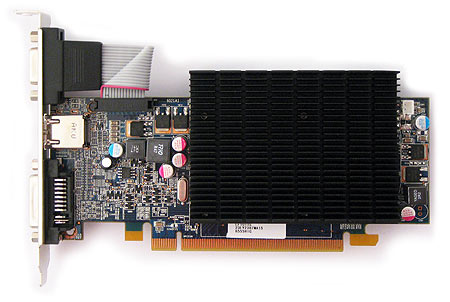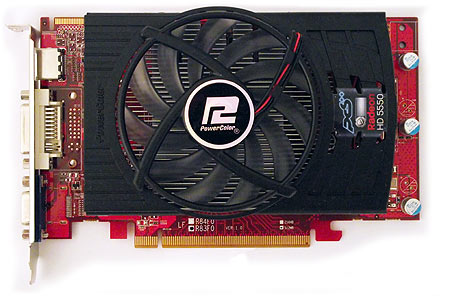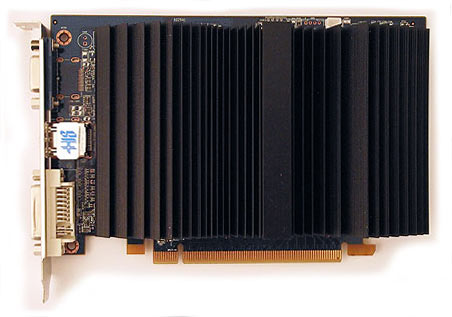Radeon HD 5550 And 5570: Pumped Up With GDDR5
AMD quietly introduced its new Radeon HD 5550 and prepped the Radeon HD 5570 GDDR5 to follow. We examine the performance of these two stealth-launched models to see if they have what it takes to replace a couple of power contenders in the sub-$100 market.
Conclusion: GDDR5-Equipped Cards Show Promise
Before we draw any conclusions, let’s talk about the Radeon HD 5000-series’ claims to fame: DirectX 11, triple-monitor Eyefinity gaming, and bitstreaming HD audio. We’ve glossed over these features in the rest of this review, but they deserve proper mention here.
As for DirectX 11, it’s currently not what we'd call an essential part of the gamer’s diet. In fact, there are no games yet that take advantage of DirectX 11 in such a way that makes the feature a must-have. I’m sure it’ll happen, but development cycles are long, the API is relatively new still, and we're just not there yet. At any rate, the performance numbers suggest that DirectX 11 features are probably best turned off for sub-$100 cards, so support is less critical for this price range.
Triple-monitor Eyefinity gaming is nice, but let’s be frank. If you’re going to spend $350 or more on three monitors and the necessary hardware for an Eyefinity-based configuration, do you really want to go cheap on your graphics card and buy one of these entry-level boards, rather than a Radeon HD 5750 (at the very least)? That doesn’t make any sense. The mainstream Radeons might handle graphically-forgiving games like World of Warcraft at triple-screen resolutions with detail levels emasculated, but no, Crysis 2 isn’t an option. On the other hand, if productivity is your thing, the sub-$100 Radeon HD 5000-series cards might be apropos.
That brings us to AMD's entry-level cards in an HTPC environment. The entire sub-$100 Radeon HD 5000-series is really ideal for Blu-ray playback in a home theater, and it’s about time we revisited this arena. To that end, we'll have HQ video-quality testing in an upcoming piece.
After all of this feature-heavy talk, we come to the inevitable bottom line: price versus performance. This is where the new Radeon HD 5550 models and the Radeon HD 5570 GDDR5 fight an uphill battle, since the market is so congested.
When this article was written, you could get a Radeon HD 4650 in the $50 range, a GeForce GT 220 DDR3 in the $70 range, a GeForce GT 240 DDR3 in the $75 range, a Radeon HD 5570 GDDR3 or GeForce GT 240 GDDR5 in the $80 range, and a Radeon HD 5670 or GeForce 9800 GT in the $90 range. Within this compact pricing structure, it’s almost impossible to recommend anything other than the Radeon HD 4650 at $50 and the GeForce 9800 GT at $90. It’s just as likely that by the time this article is published, the pricing will have changed again because it’s so volatile. Is there room in this spread for the new Radeon HD 5550 and 5570 GDDR5?
Let’s talk about each card and where it needs to be priced in order to offer solid value:
Get Tom's Hardware's best news and in-depth reviews, straight to your inbox.
Radeon HD 5550 DDR3
This new card has impressive stock performance compared to the Radeon HD 4650, combined with strong overclocking potential. This card would be priced perfectly at $60, and even though it’s a new model, it can already be found online for as low as $65. The Radeon HD 5550 DDR3 deserves to take the Radeon HD 4650’s place as the budget gamer’s starting point. It’s a little card with enough muscle to play games at 1280x1024 or 720p, it makes a great HTPC candidate for folks who value low-power usage and great video playback, and it’s ideal for budget overclockers who want to get the most out of their hardware.
Radeon HD 5550 GDDR5
Take everything positive that I said about the Radeon HD 5550 DDR3 and say it with a bit more vigor. The Radeon HD 5550 GDDR5 would be a great buy in the current market at a $70 price point, thanks to its higher-bandwidth memory subsystem.
Radeon HD 5570 GDDR5
The Radeon HD 5570 GDDR5 is good competition for the GeForce GT 240 GDDR5, and should therefore be priced similarly at $80 or so. Note that the Radeon HD 5570 DDR3 is currently priced at this level, but compared to the GeForce GT 240 GDDR5, it is still somewhat overpriced. The Radeon HD 5570 DDR3 should be knocked down a few dollars to make space for an $80 Radeon HD 5570 GDDR5.
That’s the price/performance assessment. And despite the inevitable inflated prices that new cards have on release, we should see things settle down after a brief bout of ample availability.
Frankly, the $70-$90 graphics card market is oversaturated with too many options. In this climate, the new Radeon cards will be fighting off not only competing GeForce boards, but also other cards from AMD. Choice is better than the alternative, though, and as old models are retired, we look forward to the arrival of new low-end GeForce cards based on Nvidia’s Fermi architecture.
Current page: Conclusion: GDDR5-Equipped Cards Show Promise
Prev Page Power, Temperature, And Noise BenchmarksDon Woligroski was a former senior hardware editor for Tom's Hardware. He has covered a wide range of PC hardware topics, including CPUs, GPUs, system building, and emerging technologies.
-
welshmousepk crysis 2 'on the horizon'?Reply
either you have not heard the terrible news, or you are a far more patient man than I. -
gkay09 No surprises IMO as it was the same with the HD 4650/ 4670...the 1GB DDR2 was slower than the 512MB DDR3...Reply -
You've mixed up the HIS5550 and HIS5570 end-on port pictures I think. You state the 5550 GDDR5 has no VGA and one is shown and vice-versa for the 5570 GDDR5. In fact it looks like quite few of the pictures are misplaced.Reply
-
edlight When you do the HQV tests, could you investigate drivers? They have a desktop color and a video (movies) section. With my 4670, it's not always clear which videos the video section works on. It varies between Win 7 and XP. Basically it works on movies in the overlay, and/or players with hardware acceleration turned on. In Win 7 it works on the flash videos, in XP it doesn't. In XP in video you can adjust Gamma, in Win 7 you can't. In XP the brightness etc. adjustment in video is independent from the desktop. In Win 7 desktop adjustments to brightness etc. affect the videos, even in the overlay. In XP the Dynamic Contrast button is there, but does nothing.Reply
After driver 10.4, in XP, video brightness and other adjustments just don't work. If you want to adjust the video you have to go back to 10.4.
Contrast this with nvidia. As far as I know, their drivers work properly, with Gamma adjustment for video, and video brightness etc. separated from desktop brightness etc.
But, in the last nvidia drivers I tried, there are problems with profiles. While you're in video, you can't save the settings as a profile. You have to go to desktop. Then you can save them. You used to be able to right-click on the tray icon and select your profiles. In the last nvidia driver I checked, you couldn't do that. At least you can do that in the ATI drivers. You can't sort the darn things, though.
So, to select a profile in nvidea you'd always have to open the control panel. In ATI, if you've come upon a dark video and you have several profiles to try on it, it's fast and easy by right-clicking in the tray.
I don't think the programmers actually use the control panels themselves. Such awful logic!
One last thing I'd like to know from the coming article is if the nvidia video section works on flash videos (with the 10.1 flash) in XP. It must in Win 7. -
dconnors welshmousepkcrysis 2 'on the horizon'? either you have not heard the terrible news, or you are a far more patient man than I.Reply
I would say anything under a year is "on the horizon" so a March 2011 street date lines up pretty well with that statement.
-Devin -
Onus I would like to have seen the HD4670 in the benchmarks; I think that is more likely competition than the HD4650, which was beaten pretty badly.Reply -
Belardo Yeah, the 4670 does belong on this benchmark article, but for the most part - the 5570 OC is on par with a standard 4670. Give or take.Reply
But what really belongs here is the 5450!
That would show how much MORE powerful the 5550/70 cards are... Yeah I know, about 4x... but still it should be there. Maybe the 5470 will come out ;)
Current pricing of the lower 5000 & 4000 series (Order of performance)
5450 = $40~70 ($55+ = 1GB useless versions)
4650 = $50~80
5550 = $65~90 (DDR2 or DDR3 ver)
5570 = $70~90 (DDR3)
4670 = $70~90
5670 = $85~105
5750 = $125~150 (Ouch - considering they cost less to make that 4670s)
First, when it comes to DX11 games, they are too much for the 5550 and below - but under DX10 - they do pretty good. So for your $70~75, you might as WELL buy the 4670 over the 5550s and 5570-DDR3. Now if the the 5550-DDR5 sells for the same price or less of a 4670, then it maybe worth it.
Considering the age of these cards, the 5670 should be $80~90... as it doesn't touch the $100 4850! But the 4850 & 57xx requires more power/bigger PSUs.
A non-eyeinfinity version of a 5750 for $100 would be a sweat card to get that would hammer the nail into the 4800 series.


